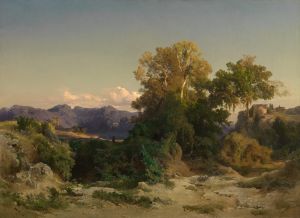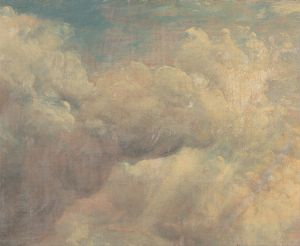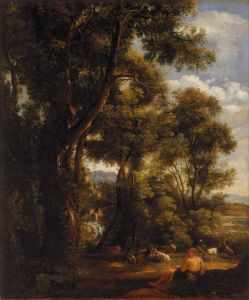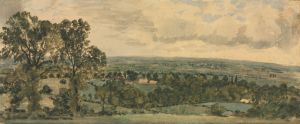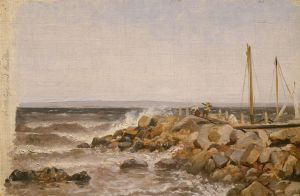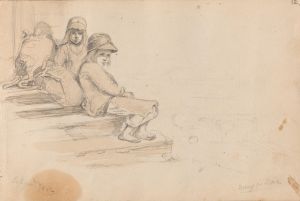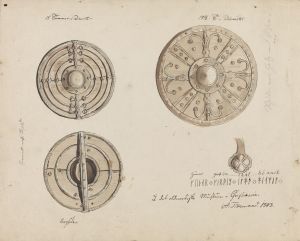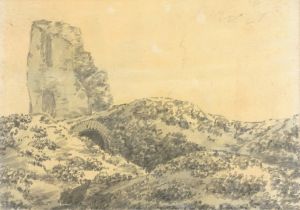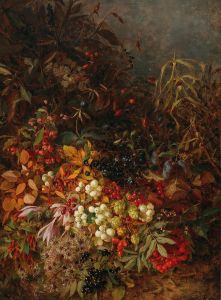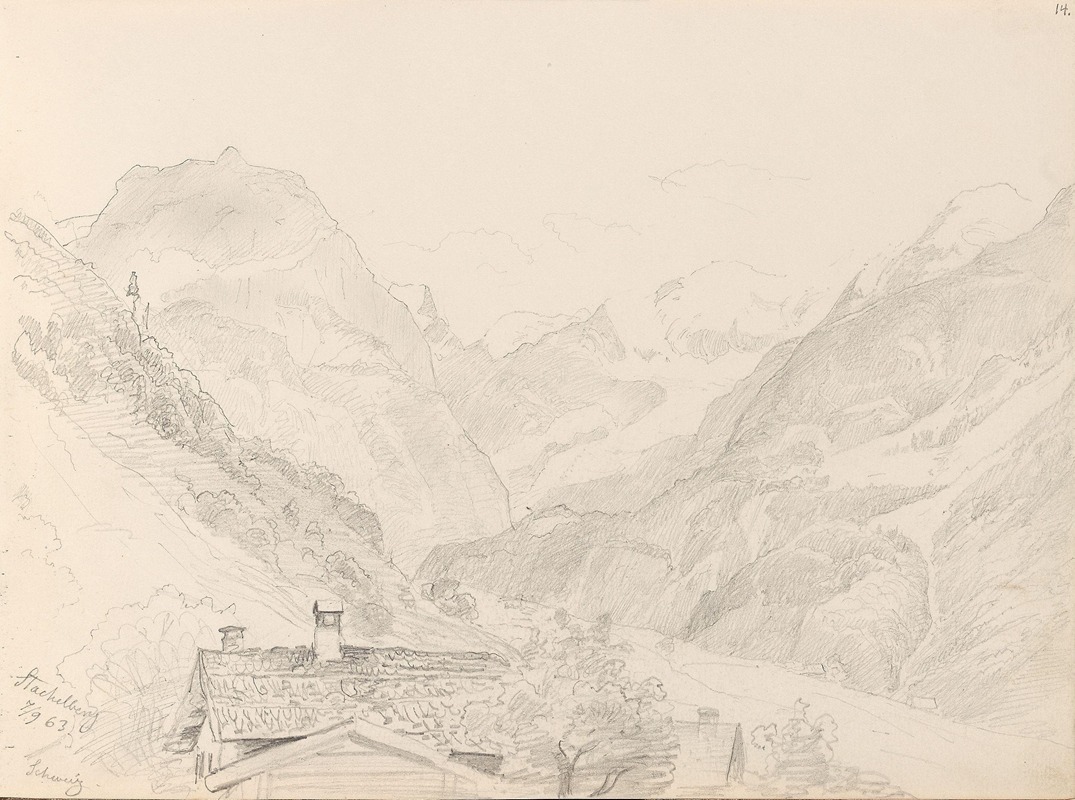
Sveitsisk landskap
A hand-painted replica of Adolph Tidemand’s masterpiece Sveitsisk landskap, meticulously crafted by professional artists to capture the true essence of the original. Each piece is created with museum-quality canvas and rare mineral pigments, carefully painted by experienced artists with delicate brushstrokes and rich, layered colors to perfectly recreate the texture of the original artwork. Unlike machine-printed reproductions, this hand-painted version brings the painting to life, infused with the artist’s emotions and skill in every stroke. Whether for personal collection or home decoration, it instantly elevates the artistic atmosphere of any space.
Adolph Tidemand was a prominent Norwegian painter known for his role in the development of national romanticism in Norway during the 19th century. His works often depicted Norwegian landscapes, folk life, and traditions, capturing the essence of the country's cultural and natural heritage. One of his notable works is "Sveitsisk landskap," which translates to "Swiss Landscape" in English. This painting is an example of Tidemand's ability to convey the beauty and tranquility of natural settings, although it is not as widely discussed as some of his other works.
"Sveitsisk landskap" reflects Tidemand's interest in landscapes, a subject that was popular among artists during the romantic period. The painting showcases Tidemand's skill in capturing the serene and picturesque qualities of the Swiss landscape, a region known for its stunning natural beauty. While Tidemand is primarily associated with Norwegian themes, this painting indicates his broader interest in European landscapes and his ability to adapt his style to different environments.
Adolph Tidemand was born on August 14, 1814, in Mandal, Norway. He studied art in Copenhagen and later in Düsseldorf, Germany, where he became part of the Düsseldorf school of painting. This movement was characterized by its detailed and realistic portrayal of subjects, often with a focus on historical and national themes. Tidemand's education and experiences in Düsseldorf greatly influenced his artistic style, which combined realism with romanticism.
Throughout his career, Tidemand collaborated with other artists, most notably Hans Gude, with whom he created several famous works such as "Bridal Procession on the Hardangerfjord." These collaborations often involved Tidemand painting the figures and Gude painting the landscapes, resulting in harmonious compositions that celebrated Norwegian culture and nature.
"Sveitsisk landskap" is less documented compared to Tidemand's Norwegian-themed paintings, which have been extensively studied and exhibited. However, it remains an important part of his oeuvre, demonstrating his versatility as an artist and his appreciation for the broader European landscape tradition. The painting likely features the characteristic elements of Swiss scenery, such as mountains, lakes, and lush greenery, rendered with Tidemand's meticulous attention to detail and atmospheric perspective.
Adolph Tidemand's contribution to art extends beyond his paintings. He played a significant role in shaping Norwegian national identity through his depictions of rural life and landscapes, which resonated with the burgeoning sense of nationalism in Norway during the 19th century. His works are celebrated for their historical significance and artistic merit, and they continue to be studied and appreciated by art historians and enthusiasts.
In summary, "Sveitsisk landskap" by Adolph Tidemand is a testament to the artist's skill in landscape painting and his ability to capture the essence of different natural environments. While not as extensively documented as some of his other works, it remains an important piece that reflects Tidemand's broader artistic interests and his contribution to the romantic landscape tradition.





